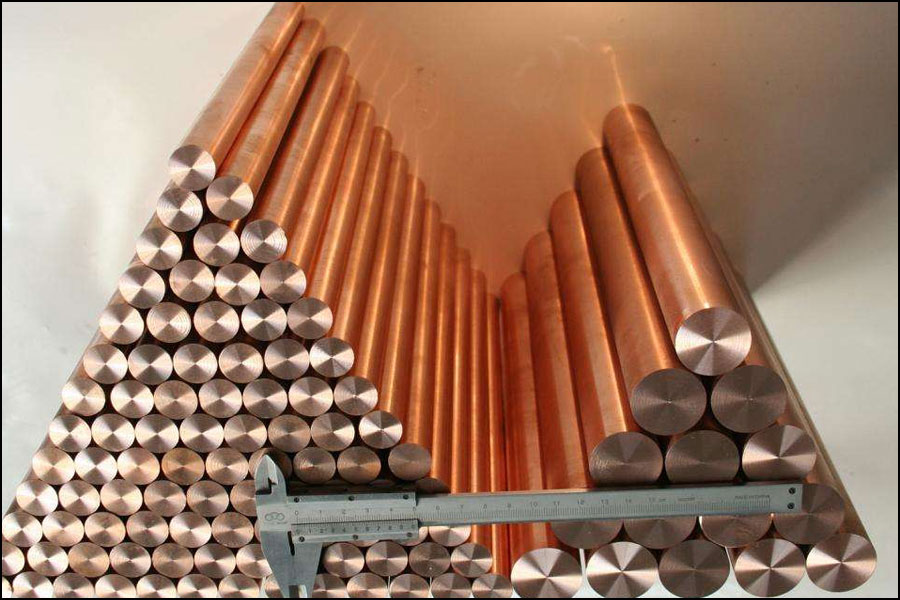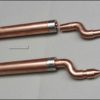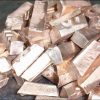
Tungsten-copper alloy is a composite material composed of tungsten particles with a body-centered cubic structure and a copper binder phase with a face-centered cubic structure that neither solid-dissolve each other nor form intermetallic compounds. It is usually called a pseudo alloy or Fake alloy. Therefore, it not only has the characteristics of high strength, high hardness, and low expansion coefficient of tungsten, but also the high plasticity of copper, good electrical and thermal conductivity, etc. These unique comprehensive properties make tungsten copper alloys widely used.
Since its successful development in the 1930s, tungsten copper alloy has been mainly used as electrical contacts for various high-voltage electrical switches for a long time. Because of its high withstand voltage strength and low electrical ablation performance, it has become a key material to promote the continuous improvement of the voltage level and power used by high-voltage electrical switches.
Around the 1960s, tungsten-copper alloys gradually began to be used as electrodes for resistance welding, electrical machining, and high-temperature parts that contact high-temperature gas in aerospace technology. After the 1990s, with the development of large-scale integrated circuits and high-power electronic devices, tungsten copper alloys, as upgraded products, began to be used as electronic packaging and thermal deposition materials on a large scale. At the same time, tungsten copper alloys have successfully applied
Preparation process of tungsten copper alloy material
One end of the tungsten-copper alloy is high tungsten and low copper, and the other end is high copper and low tungsten, with a gradient transition layer in the middle. The gradient material made in this way has extremely specific functions and good application prospects. At the same time, a lot of research on gradient material forming at home and abroad.
Many methods have been proposed. One is to prepare intermittent gradient layers, such as the traditional dry powder stacking method, and the other is to prepare continuous gradient layers, such as grouting, sedimentation, and centrifugal molding. In addition, some new process methods have also been used in the preparation of tungsten-copper alloy functionally gradient materials.
Application of tungsten copper alloy
1. Electrical contacts and electrical processing
At present, the main use of tungsten-copper alloy is still electrical contacts, especially the contacts of high-voltage and ultra-high-voltage switch appliances. However, with the development of switching appliances to higher voltages and larger capacities, the technical requirements for tungsten-copper materials continue To improve, it is necessary to develop new tungsten copper alloys and new preparation processes. The emergence of vacuum switchgear has promoted the development and application of tungsten copper alloys for vacuum, and has become an important new application field of tungsten copper materials. This kind of electrical appliances require vacuum to be used, with many varieties and specifications, and different operating conditions
Therefore, in addition to the requirements to meet the vacuum conditions, tungsten copper alloys suitable for different purposes need to be developed. The development of various advanced electrical processing technologies has become another important application field of tungsten copper materials with high heat resistance, high electrical and thermal conductivity and resistance to arc sintering. This requires that the structure of tungsten copper material is as uniform and dense as possible, and the performance is stable, and at the same time, it must meet the needs of multiple varieties and specifications for the processing of workpieces with different conditions and various shapes.
2. Application of Microelectronics Technology
In recent years, due to the excellent thermal and electrical properties of tungsten-copper alloys, the application of tungsten-copper materials as substrates, inserts, connectors and heat dissipation elements in large-scale integrated circuits and high-power microwave devices has been rapidly developed. Its high thermal conductivity and heat resistance greatly increase the power of microelectronic devices and make the devices miniaturized; its suitable thermal expansion coefficient can be well matched with semiconductor materials such as silicon wafers, gallium arsenide and ceramic materials used in microelectronic devices. Connect to avoid thermal fatigue damage caused by thermal stress.
3. Tungsten copper alloy for high temperature
Since the 1960s, the United States has begun to use tungsten-copper alloys for rockets and missiles, nozzle throat linings, gas rudders, nose cones and other components used at high temperatures. The principle of its application is that when the temperature of the fuel gas approaches or exceeds the melting point of the alloy (3000°C), copper melts at 1083°C and evaporates at 2580°C (0.1MPa) to absorb a large amount of heat and provide good cooling for the tungsten skeleton The effect is to ensure the normal operation of the components, so that the material can withstand the high temperature that ordinary materials cannot withstand. Therefore, the application of high-temperature tungsten-copper alloys in metallurgy, aerospace and military industries will continue to grow.
4.Military tungsten copper alloy
According to the theory of penetration fluid dynamics, the formation of a longer and stable jet flow of the drug-type cover requires that the drug-type cover material has high density, high speed of sound, good thermal conductivity, high dynamic fracture elongation and other properties. The high density and High dynamic performance can greatly improve the armor-piercing power of armor-piercing projectiles. The United States, France, Israel and other research results on the W-CU charge type cover material show that under the condition of 3 times the caliber of the explosive height, its armor penetration depth can be increased by about 30% compared with the pure copper charge type cover. In addition, due to the excellent properties of tungsten copper alloy such as heat resistance, high conductivity, arc resistance and friction resistance, it may become the rail material of the electromagnetic gun under development.






